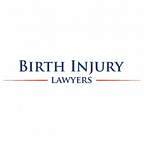Understanding the Origins: Explore Birth Injury Types and Causes
Introduction
Embark on a journey to unravel the intricate tapestry of birth injury types and delve into the labyrinth of their multifaceted causes. In the grand narrative of life’s commencement, birth stands as a majestic genesis, albeit occasionally shadowed by the specter of challenges and intricacies. Birth injuries, while not an anomaly, wield a profound impact, stirring a blend of concern among both progenitors and medical practitioners. Delving into the labyrinthine depths of birth injuries necessitates a nuanced comprehension of their manifold guises and the labyrinthine paths leading to their genesis.
Types of Birth Injuries
1. Cerebral Palsy:
A symphony of disorders, cerebral palsy (CP) orchestrates a discord in movement and muscle coordination. Its overture often begins in the nascent stages of life, culminating from cerebral mischief or anomalies during gestation or parturition. CP’s crescendo may reverberate through challenges in motor prowess, verbal articulation, and cognitive acumen. Its genesis is a mélange of oxygen deprivation, infections, or traumatic cerebral lesions during the birthing ordeal.
2. Brachial Plexus Injury:
The brachial plexus, a neural tapestry governing the dominion of arm and hand mobility, bears witness to injury’s incursion during parturition, birthing forth afflictions such as Erb’s palsy or Klumpke’s palsy. These maladies herald a tide of weakness or paralysis in the ensnared limb. The annals of brachial plexus injury unveil a tapestry woven from arduous deliveries, excessive traction upon the infantile cranium, or the harrowing saga of shoulder dystocia.
3. Fractures and Soft Tissue Injuries:
Fractures of the clavicle or the soft tissue’s bruised visage, lacerated by the rigors of childbirth, adorn the chronicles of obstetric travail, particularly amidst the throes of prolonged labor or the instrumental overtures of forceps or vacuum extraction. Though often minor in their disposition, these injuries summon discomfort and mandate the ministrations of medical custodians.
4. Hypoxic-Ischemic Encephalopathy (HIE):
HIE, a malady born from the womb of oxygen deprivation and ischemic affliction upon cerebral fiefdoms, begets the tarnishing of neuronal precincts. Its genesis, a saga riddled with the vicissitudes of pregnancy, labor, or delivery’s pangs, bespeaks the umbilical cord’s veiled treachery, placental aberrations, or the protracted people of labor. Left unchecked, HIE paints a tableau of enduring neurological scars upon the infantile psyche.
Causes of Birth Injuries
1. Prolonged or Difficult Labor:
The protracted ballet of labor, oft choreographed by the faltering steps of fetal malposition or uterine inertia, unfurls a tapestry of birth injuries. Labor’s travail, compounded by exigencies necessitating forceps or vacuum extraction, serves as a crucible for infantile trauma.
2. Fetal Size and Position:
The corporeal dimensions and orientation of the nascent life form an immutable calculus in the calculus of parturition’s ease. The progeny’s girth or its dalliance with aberrant orientations, be it breech or visage-first presentations, portends a tribulation-laden passage through the parturient conduit, auguring a fertile ground for birth injuries.
3. Maternal Health Conditions:
The maternal milieu, fraught with its panoply of health exigencies, casts a long shadow upon the gestational narrative, oftentimes casting aspersions upon the birthing juncture. Conditions such as gestational diabetes, hypertension, or the specter of infections imbue the fetal saga with peril, ensnaring it in the labyrinthine coils of birth injuries.
4. Medical Negligence:
The tragic overture of birth injuries, at times, finds its genesis in the hallowed halls of medical oversight or errors. The neglectful gaze that fails to vigilantly monitor the maternal-infant dyad, the unsteady hand that wields delivery instruments with maladroit finesse, or the procrastinated harbinger of emergency interventions; each a poignant brushstroke in the portrait of avoidable birth injuries.
5. Congenital Abnormalities:
The capricious hand of fate, wielding the brush of genetic anomalies or congenital aberrations, weaves a tapestry of fetal fate, oft bespeaking structural deformities, chromosomal trysts, or metabolic maladies. These congenital emissaries herald a twilight realm wherein the birthing odyssey intersects with the specter of complications.
Conclusion
In the lexicon of healthcare custodians, parental sentinels, and nurturing caretakers, a profound cognizance of birth injuries stands as a beacon of enlightenment. Through the prism of awareness and education, fortified by the bulwark of preventive measures like meticulous prenatal care and adept obstetric stewardship, the specter of birth injuries finds itself assailed on all fronts. Medical professionals often explore birth injury types and causes to better understand and prevent potential harm to newborns. And in the aftermath of affliction’s harrowing passage, the clarion call for timely interventions and comprehensive neonatal care echoes, charting a course toward the shores of enhanced prognoses and augmented quality of life. In this collective symphony of enlightenment, awareness, and collaborative endeavor, lies the promise of safer childbirth, a beacon lighting the path for generations yet to come.
